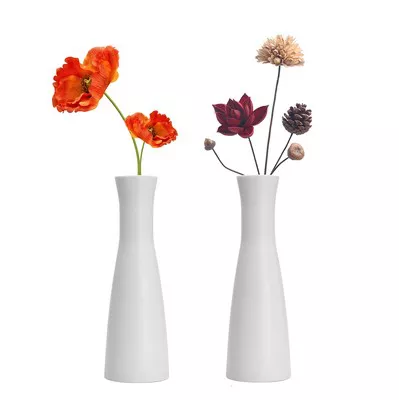Planting flowers in a planter is a rewarding and creative way to enhance the beauty of your outdoor space. Whether you have a spacious garden or a compact balcony, using planters allows you to bring bursts of color and fragrance to any setting. In this comprehensive guide, we will walk you through the step-by-step process of planting flowers in a planter, offering valuable tips to ensure your floral display thrives and flourishes.
Choosing the Right Planter:
Before you dive into planting, it’s crucial to select the right planter for your flowers. Consider the size, material, and design of the planter, ensuring it complements your outdoor aesthetics. Adequate drainage is essential, so opt for a planter with drainage holes to prevent waterlogging and root rot. Additionally, choose a planter that suits the specific flowers you intend to grow, as different plants have varying space and depth requirements.
Selecting the Right Flowers:
The key to a successful planter garden lies in choosing the right flowers for your climate, sunlight exposure, and personal preferences. Consider the amount of sunlight your chosen location receives, whether it’s full sun, partial shade, or full shade. Select flowers that thrive in these conditions and complement each other in terms of height, color, and bloom time. Mixing different varieties can create a visually appealing and dynamic display.
Gathering Essential Supplies:
To ensure a smooth planting process, gather all the necessary supplies before you begin. This includes potting soil, fertilizers, a trowel, gardening gloves, and, of course, the flowers you’ve chosen. Choose a high-quality potting mix that provides adequate nutrients and drainage for your plants. Fertilizers should be selected based on the specific needs of your chosen flowers, promoting healthy growth and vibrant blooms.
See Also: How to preserve flowers in clear resin?
Preparing the Planter:
Start by adding a layer of pebbles or broken terracotta pots to the bottom of the planter to facilitate drainage. Next, fill the planter with the selected potting mix, leaving enough space for the roots of your flowers. Consider adding organic matter, such as compost, to enrich the soil and enhance its fertility. Mix the soil thoroughly to ensure an even distribution of nutrients.
Arranging and Planting:
Before planting, arrange your chosen flowers in the planter to determine their placement. Consider the height, color, and spread of each plant to create an aesthetically pleasing composition. Once satisfied with the arrangement, start planting by removing the flowers from their containers and gently teasing the roots to encourage outward growth.
Dig holes in the soil according to the depth and spacing requirements of each plant. Place the flowers in the holes, ensuring they are positioned at the same depth as in their original containers. Fill the gaps with soil and press it down gently to eliminate air pockets. Water the planter thoroughly to help settle the soil and hydrate the plants.
Watering and Maintenance:
Proper watering is crucial for the health of your planter garden. Water the flowers consistently, keeping the soil evenly moist but not waterlogged. Adjust your watering schedule based on the specific needs of each flower and the prevailing weather conditions. Regularly check for signs of pests or diseases, and address any issues promptly to maintain a thriving planter garden.
Fertilizing:
To keep your flowers healthy and vibrant, incorporate a regular fertilizing schedule into your maintenance routine. Choose a balanced, water-soluble fertilizer and follow the recommended application rates for your specific flowers. Fertilize during the growing season, typically from spring to early fall, to provide the necessary nutrients for robust growth and abundant blooms.
Pruning and Deadheading:
Regular pruning and deadheading help promote continuous blooming and maintain the overall health of your planter garden. Remove spent flowers to encourage the production of new blooms and prevent the development of seeds, which can divert energy from flower production. Prune back any leggy or overgrown stems to maintain a compact and well-shaped arrangement.
Seasonal Care:
Adjust your planter garden care routine based on the changing seasons. In colder climates, protect your flowers from frost by moving the planter to a sheltered location or covering it with frost cloth. In hotter climates, provide shade during the peak hours of sunlight to prevent heat stress. Consider rotating your planters periodically to ensure all sides receive adequate sunlight.
Conclusion:
Planting flowers in a planter is a delightful and accessible way to bring the beauty of nature to your doorstep. By selecting the right planter, choosing suitable flowers, and providing proper care, you can create a stunning and dynamic display that enhances your outdoor space throughout the seasons. Follow this comprehensive guide to planting flowers in a planter, and watch as your colorful and fragrant garden becomes a focal point of admiration for family, friends, and passersby.


